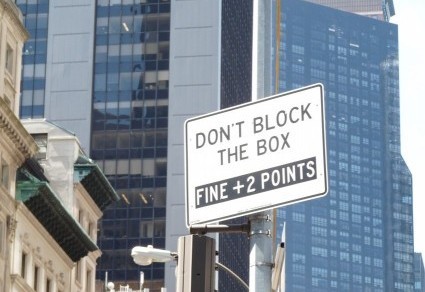“If at first you don’t succeed, try, try again.” This old adage advocates not only persistence but also repetition. And unlike many counselors, the adage follows its own advice, doubling up on try. Is repetition a good idea in signs? I’ll let you decide after you take a look at these.
Jenny, a student in my writing class at Hugo House (www.hugohouse.org), sent me this one:

Technically this sign isn’t repetitive, because PRICE changes to Prices as the font grows. Why? That’s a puzzle, as is the whole sign. What’s with all the empty space and the solitary O? And why repeat? Perhaps for emphasis: “Hey, customer, we really mean it!” Maybe to scold: “Had you listened the first time, we wouldn’t have to tell you again.” Either way, the punctuation in the last line is a problem. Quotation marks most often indicate the reproduction of someone’s exact words. However, quotation marks can also distance the quoter from the quotation, the visual equivalent of a wink and a nod: “We say LOW PRICE but we actually charge double. And just try cashing in on our GUARANTEE!” A third possibility is that the sign writer followed the recent trend that employs quotation marks as attention-getters. I’m not happy with that usage. It’s hard enough, these days, to separate fact from fiction.
Moving on, here’s a sign I spotted in a dry-cleaning shop:

Why make two statements about PERC? Correct me if I’m wrong, but isn’t NO PERC ODOR a given when there’s NO PERC? Or does someone sell PERC ODOR to people who enjoy chemical smells but don’t want the liver and kidney damage that PERC brings?
This sign’s repetition is the least of its problems:

So they BUY . . . CASH for CA$H? Good to know, though I’m left wondering what the exchange rate is when you convert CASH to CA$H. What really bothers me, though, is the offer to TURN YOUR OLD BOY FRIENDS JEWELRY INTO CA$H. If the statement has something to do with ownership, it should read BOYFRIEND’S JEWELRY or, for someone with an active dating life, BOYFRIENDS’ JEWELRY (the plural possessive). Do I have to point out that turning someone else’s adornments into CA$H is theft? Worse than the apostrophe error is the possibility that AND might be missing from the space between FRIENDS and JEWELRY. Even if you hate your OLD BOYFRIENDS, you can’t swap them for CA$H. You really can’t!
On that stern note, I’ll say BYE BYE for today.











